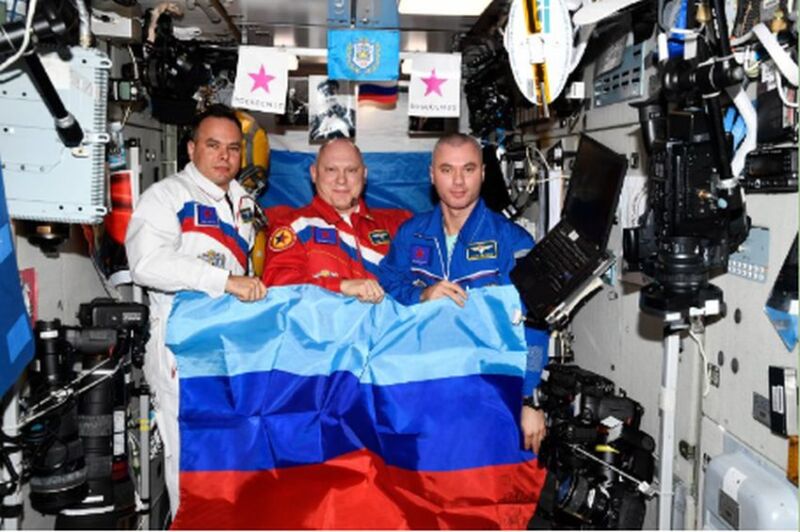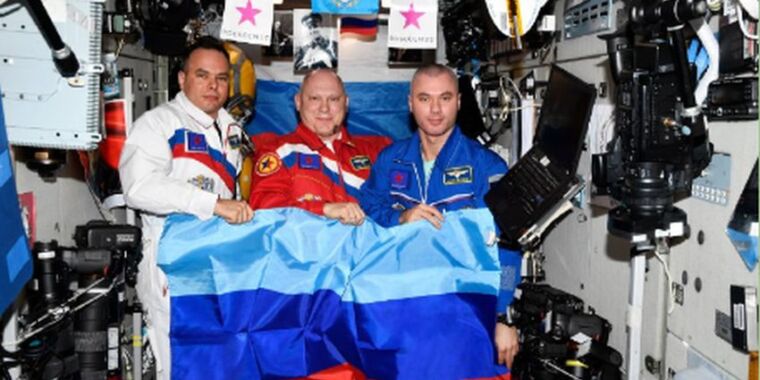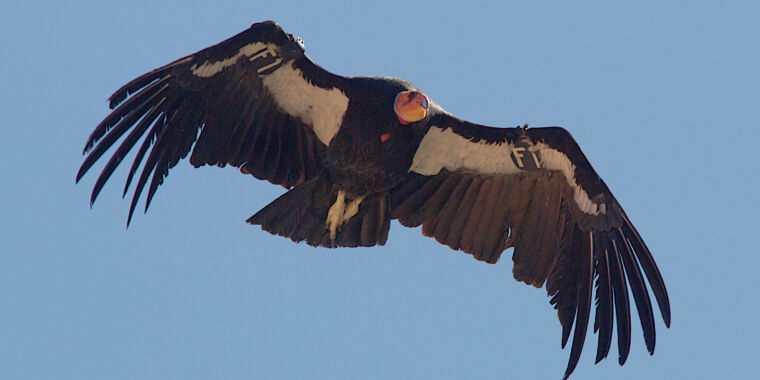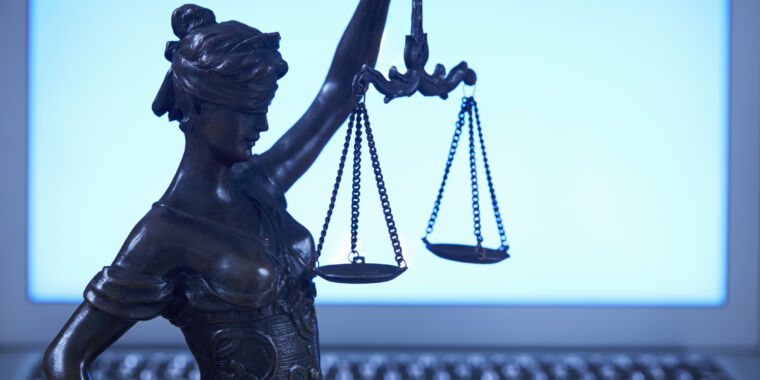
The Russian state space corporation responsible for spaceflight activities, Roscosmos, on Monday posted images to its official Telegram channel showing three cosmonauts with the tri-color flags of the Luhansk People’s Republic and the Donetsk People’s Republic.
The photos were taken recently on board the International Space Station and show smiling cosmonauts Oleg Artemyev, Denis Matveyev, and Sergey Korsakov posing with the flags.
“This is a long-awaited day that residents of the occupied areas of the Luhansk region have been waiting for eight years,” the Roscosmos message stated. “We are confident that July 3, 2022, will forever go down in the history of the republic.”
The images and social media posting represent the most blatant use of the International Space Station—which is operated by the United States, Russia, Japan, Canada, and the European Space Agency—for Russian propaganda purposes since the invasion of Ukraine.
Luhansk and Donetsk are two breakaway “quasi-states” in the eastern region of Ukraine known as the Donbas. Ukraine and Russia have battled over the two regions since 2014, as Russia has agitated separatists in the Ukrainian territory. The United Nations does not recognize the two “republics,” and Ukraine has designated them as “temporarily occupied territories.” Fighting has heated up since the Russian invasion of Ukraine in February 2022. This past weekend, Russian forces claimed to have established control over the entire Luhansk region.
A professional relationship
NASA and Roscosmos, as well as other space agencies, have continued cooperating on the International Space Station since the invasion began. Some US officials have suggested that NASA should consider breaking ties with Russia in space due to the atrocities in Ukraine. However, the space agency’s administrator has defended the partnership on the basis that the station flies above geopolitical tensions on Earth. NASA also wants to keep flying the station, as breaking the US segment from the Russian segment would be difficult and potentially fatal to the operation of the orbital facility.
In an interview published Monday in the German publication Der Spiegel, NASA Administrator Bill Nelson reiterated this stance.
“In the midst of the Cold War, when the Soviet Union and the United States were mortal enemies and their nuclear weapons could be used at any time, a US and a Soviet spacecraft met in space in 1975,” Nelson said. “Peaceful cooperation continued even after the collapse of the Soviet Union. Our space shuttle docked with the Russian space station Mir. And then we decided to build the International Space Station together. Both countries are needed for operations, the Russians for propulsion, the Americans for power. We will continue to have a very professional relationship between cosmonauts and astronauts to keep this station alive.”
Nevertheless the provocative actions this weekend by Roscosmos, with its cosmonauts celebrating the so-called liberation of Ukrainian territory, brings the bloody conflict on Earth into space. To some observers, such as former NASA astronaut Terry Virts, Russia’s use of the space station for propaganda purposes is unacceptable.
“I am incredibly disappointed to see cosmonauts and Roscosmos using the International Space Station as a platform to promote their illegal and immoral war, where civilians are being killed every day,” said Virts, who flew side by side with Russians and commanded the space station in 2015. “The space station is supposed to be a symbol of peace and cooperation.”
Virts said NASA has largely been trying to look the other way when it comes to Russian actions, most notably when it comes to Roscosmos chief Dmitry Rogozin, who has made numerous jingoistic statements about the war. But in this case, he said, the agency really cannot afford to.
Seat swap
NASA’s cooperation with Russia may come into greater public focus in a couple of months. At present, a NASA astronaut named Frank Rubio is scheduled to fly on a Russian Soyuz spacecraft to the station in September. Around the same time, a Russian cosmonaut named Anna Kikina is due to fly on a SpaceX Crew Dragon vehicle to the station as part of the seat swap. The arrangement has not been formally agreed to by the US and Russian government.
In his German interview, Nelson defended the swap, saying, “It makes a lot of sense for us. You need both Russians and Americans to operate the space station. What happens if something is wrong with one of our spacecraft? We need the other vehicle as a back-up. And that’s why we will continue to have crew exchanges.”
Such an argument may soon ring hollow, however. Boeing’s Starliner spacecraft may make its first crewed test flight before the end of this year, and if it is successful NASA will have two US spacecraft capable of reaching the station.








